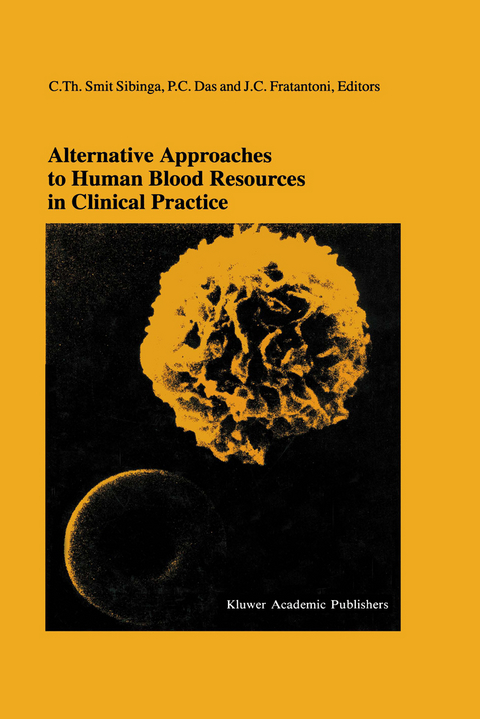
Alternative Approaches to Human Blood Resources in Clinical Practice
Springer-Verlag New York Inc.
978-1-4613-7571-5 (ISBN)
As we approach the year 2000, the major concerns about transfusion medicine remain its logistics, safety and effectiveness. This theme is presented in the proceedings of the 22nd International Symposium on Blood Transfusion, developed in 21 up-to-date topics, collected and discussed in four sections.
This book will be of timely value to students, professionals and all others interested or involved in the field of transfusion medicine, whether clinical or related.
I. The Clinical Setting: How to Optimise Supportive Haemotherapy.- Principles of Supportive Haemotherapy.- What Should Trigger a Transfusion?.- The Efficacy of Technologies to Minimise Peri-Operative Allogeneic Transfusion.- Evidence-Based Transfusion Medicine or the Need to Evaluate Clinical Outcome.- Discussion.- II. Chemical and Biological Alternatives.- The Role of O2 Transport in the Development of the Transfusion Trigger.- Recombinant Human Erythropoietin — Could It Be Used in a Better Way?.- The Impact of Haematopoietic Growth Factors on Supportive Care in Clinical Oncology: With Special Attention to Potential Tumour Cell Contamination in the Stem Cell Harvest.- The Development of Synthocytes™, a Novel Platelet Substitute.- Recent Developments in the Construction of Bispecific Antibodies.- Re-Appraising the Waste Status of Buffy Coats: Natural Human Interferon.- Discussion.- III. Alternative Approaches in Clinical Practice.- Volume: A Matter of Replacement.- The Management of Anaemia in the Surgical Patient: What’s New?.- How to Save Blood: Alternative Approaches in Anaesthesiology and Surgery.- The Use of Technologies to Decrease Perioperative Allogeneic Blood Transfusion: An International Survey of Practice.- Umbilical Cord Blood as an Alternative Source of Haematopoietic Stem Cells for Transplantation.- Cord Blood Banking and Transplant in Europe.- Discussion.- IV. The Balance of Risks, Benefits and Costs.- Indications for Red Blood Cell Transfusion.- Cost-Effectiveness of Conventional and Alternative Approaches in Transfusion Practice: The Value of Decision Analysis.- The Design of Transfusion in Randomised Controlled Trials in Critically I11 Patients.- The Future of Human Blood Resources.- Discussion.
| Reihe/Serie | Developments in Hematology and Immunology ; 33 |
|---|---|
| Zusatzinfo | XVI, 260 p. |
| Verlagsort | New York, NY |
| Sprache | englisch |
| Maße | 160 x 240 mm |
| Themenwelt | Medizin / Pharmazie ► Medizinische Fachgebiete ► Anästhesie |
| Medizin / Pharmazie ► Medizinische Fachgebiete ► Chirurgie | |
| Medizinische Fachgebiete ► Innere Medizin ► Kardiologie / Angiologie | |
| Medizin / Pharmazie ► Medizinische Fachgebiete ► Intensivmedizin | |
| ISBN-10 | 1-4613-7571-1 / 1461375711 |
| ISBN-13 | 978-1-4613-7571-5 / 9781461375715 |
| Zustand | Neuware |
| Haben Sie eine Frage zum Produkt? |
aus dem Bereich


